In 2023, Jesse James Chisholm shared insights into the visual effects work on Ant-Man and the Wasp: Quantumania. His next venture was Francis Ford Coppola‘s Megalopolis, where he elaborates on the unique challenges of this extraordinary project.
How did you get involved on this movie?
When I was working on my last Marvel project, Francis was trying to navigate a tricky relationship with his VFX team and Art Department. He reached out to take my temperature on some of the approaches that people were pushing for. He’s never bought in on visual effects heavy handed use of CGI. He shoots miniatures, matte paintings, practical gags, etc. I mean look what he and Roman did on Dracula, that movie felt hand made in the best possible way. When he and I were trading emails, I encouraged him to continue to do as much in camera as possible, if it didn’t work, he could always fallback on CG. Of all the film makers, he knows how to get things to look good in camera and lean on persistence of vision.
So, to answer the question, I’m Francis’ nephew. I have always tried to distance myself from this fact and keep it a secret. I’m a blonde kid that was married into this big Italian family, so it wasn’t that hard to hide. I was all in on a career in film, I wanted to get jobs and be rewarded based on my merits. Stand on my own two feet bullshit. I never asked for any sort of hand out, I started sweeping floors, fabricating for Thaine Morris. I remember the smell of wrapping 4 aught cables in downtown LA, dealing with the dichotomy of being fastidious but also having to be strong enough to schlep camera cases, breaking my back in the art department. Basically, finding my way into every department that would have me, and then just trying to learn as much as possible and outwork the person next to me. Francis hired his sister Talia and nephews Nicolas and Jason to act, his son Roman to Direct, my stepfather Bill Neil, a miniatures DP and VFX Sup, my brother Chris a director that Francis hired as an acting coach, the list goes on. Francis is extremely generous in his collaborations with family, it also helps that they are unflinchingly talented. All this to say film has raised me, provided for me. I’ve come to realize that film is family, and I am so proud and grateful to be a part of mine, both in relation and through experience.
Initially I knew he had an ambitious film that was gaining momentum and at the time I was going from project to project flat out for Marvel. It didn’t look like we would line up, so I didn’t really pursue. I enjoyed our relationship as it sat, and I knew if we entered into this process, I could fuck that up. When he was nearing the end of principal photography we spoke again, I had just delivered 2800 shots for a Marvel film on a Wednesday, and I was on a plane three days later to Georgia. I spent that Sunday sitting with Francis, watching and talking film, his new cut of One from the Heart, and short films he had shot, as well as walking around his All-Movie Hotel, and riding around in his golf cart. I quickly went from nephew to student. I stayed for the next week working long days studying the photography to see what I was getting into and to figure out how I could support him. I also went through the data collected on set and sat with Bradley Rubin to look at all the design to get into the show’s head as much as possible. We tore through books, looked at architecture, studied Neri Oxman, and scientific processes of plants being grown for shelter and even shoes.
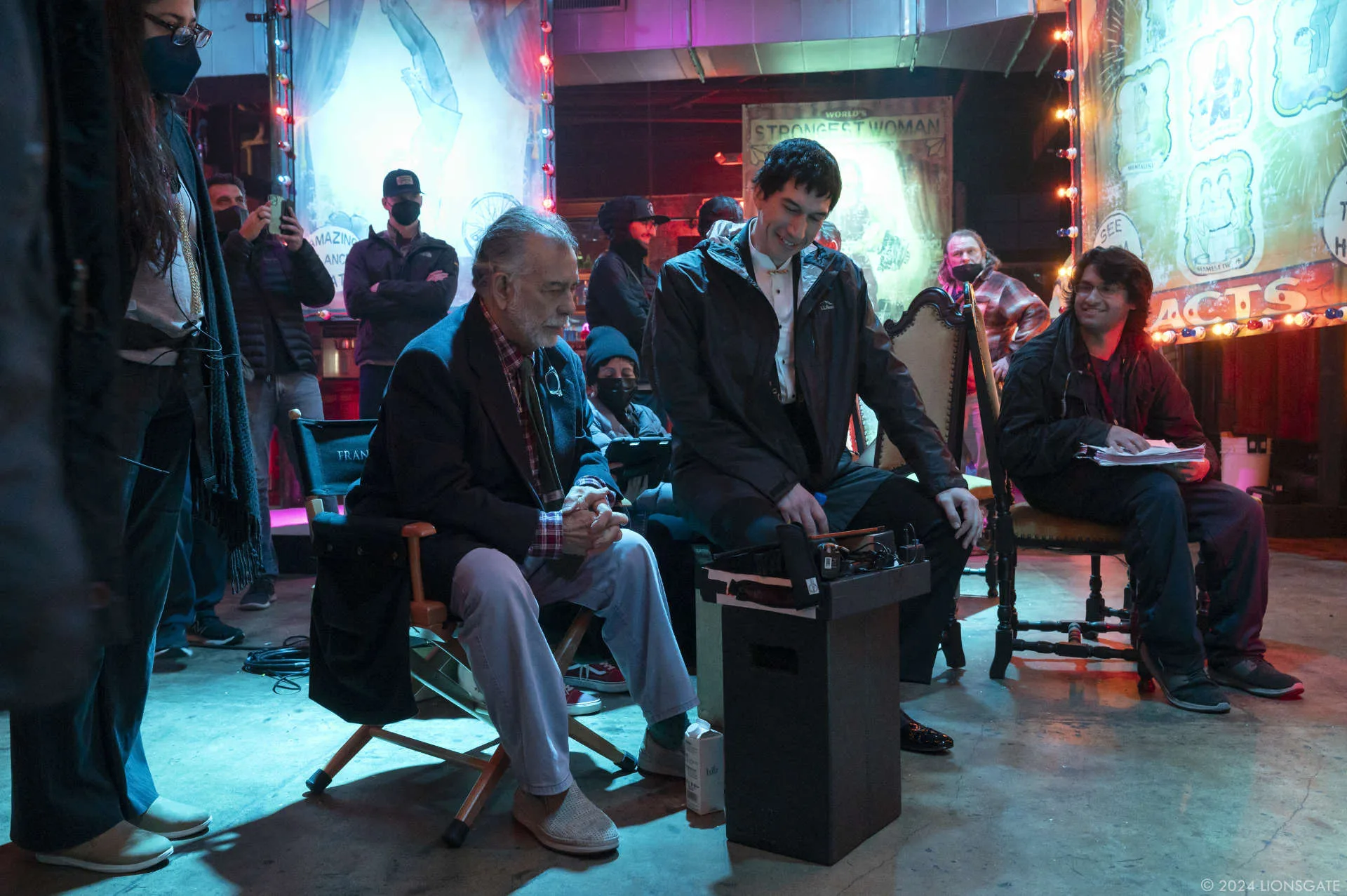
How was the collaboration with director Francis Ford Coppola?
I’ve worked with a lot of smart people, but never of his genius. I tried to be his steady ship in the middle of the storm. I know him as an uncle and from what I have read or watched in behind-the-scenes footage like Ellie’s documentary Hearts of Darkness. It felt like filmmaking was a bit like going into battle for him. It was profound to me that his films got made at all. There seemed to be a lot of acrimony to get what he wanted, and you’d see people that thought they knew better – which is crazy knowing what he’s accomplished over his career. I always had this in the back of my mind, so I knew once I crossed the Rubicon and started working with him, I was admitting that I was willing to risk fracturing my relationship with Francis. I knew that I brought a particular skill set to the table and I was excited that I could collaborate and support a film maker of his caliber, and I was equally nervous for all the same reasons. I quickly learned with him that I needed to trust the process, I wasn’t here to make what I wanted or make what I thought he wanted. I was here to do exactly what he wanted. Like all relationships, it took time to build trust. His notes weren’t always direct like “make the specular more present.” Instead, we would talk for hours about history, life, love, politics, and films. All of the small clues and details that he spoke of let me internalize what he wanted me to understand. And by happenstance along the journey, you internalize the why. You have these ah-ha moments to yourself. It sounds simple, but you have to listen.
I remember working on the girder scene where Cesar and Julia have their first kiss, we just weren’t getting there. He turned to me and said, “Jesse, think about when you kiss a girl, that first kiss is so dangerous knowing all the things that will follow and how it will change your life.” There was quite a bit more to it, but what I’m saying is it allowed me to be 7000 feet in the air with them and understand what needed to get done.
I was also able to collaborate with Dean Sherriff in post. He was painting over frames that were already shot. Dean was on for a few long runs on the film, but Francis permanently invited him to help take the film through post. Dean just spoke Francis.
Our editor, Cam McLauchlin, was also a collaborator and massive part of bringing this film to life. He worked his ass off to mold this work of art with Francis. It’s like watching someone make a painting, there is no wrong way, people may not like it, but if you choose a different color or use a different technique, it may find its way into the Louvre. This film was a living breathing piece of art, and we all had our hands in it using our different disciplines. When I finished the show and I was able to take a step back, it was clear that Francis orchestrated every part. I don’t know if that makes sense, but it was a collaboration of a small group of talented artists that cared deeply about the man and his project.
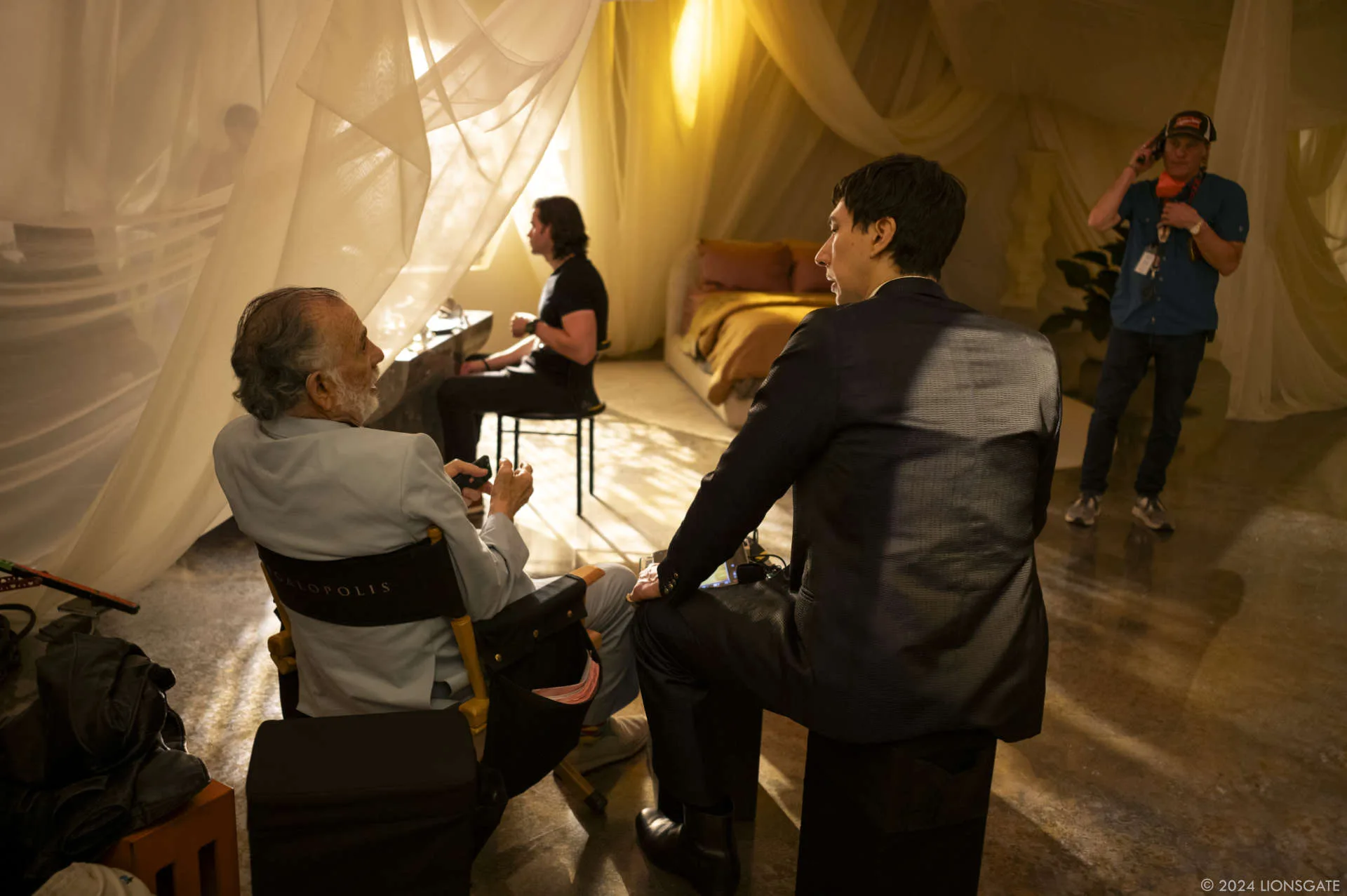
How did you choose the various vendors and split the work amongst them?
I had a few vendors in mind, but we had to partner with a team that could put out beautiful work, understand the Poetic Realism Francis was after, and be aggressive with their pricing. RISE proved to be this vendor for us, I love Florian Gellinger. We first worked together on Black Panther and when I spoke with him about the potential of Megalopolis, he said RISE would do whatever they could to help Francis see his film though. Oliver Schulz supervised, and Katrin Arndt produced for RISE. Oli is an incredible artist, and creative partner. We had Oli and Kat fly out to Peachtree to watch the film several times with Francis and the team. Francis would call out the meaning behind moments in the screenings, or what he expected to see in certain scenes and why. Through this, Francis felt Oli globally understood what needed to be done and gave RISE his blessing. So, before they flew back to Germany to undertake the project, I took them out to shoot guns, drive muscle cars, drink American beer, and eat some southern cooking in Peachtree. I ended up falling in love with that place! If you ever find yourself there, go to Elliot’s and tell John and Madison I sent you.
We were also fortunate to work with Viktor Muller and Lenka Likarova at UPP, longtime collaborators with Francis. Kevin Chandoo and the team at Ghost VFX came in clutch towards the end of post. Wild Capture in collaboration with Candice Alger and Brennen Dicker at Creative Media Industries allowed us to do our crowd capture and work at the school with their students manning the controls. They have a hell of a program over there; Francis was blown away at what the students had at their disposal. Francis also felt strongly about creating Megalopolis in Unreal, so I hired Johnson Thomasson as my Senior Unreal Engine Specialist. He was tasked with delivering over 50 shots using Unreal as our final Render Engine. I built a small In-house team with Peter Herlein as my Compositing Supervisor and Jonas Bruse an absolute beast of an artist as my Compositor.
Rob Legato is a friend of Francis’s, they were going back and forth about the visual effects for Mega for quite some time. I started at Digital Domain in 1997, I think Rob left in 1995, but I have always admired him and hoped I would get a chance to work with him. Francis intro’d us and I was blown away with how open he was and giving of his time. Francis is lucky to have him as a friend.
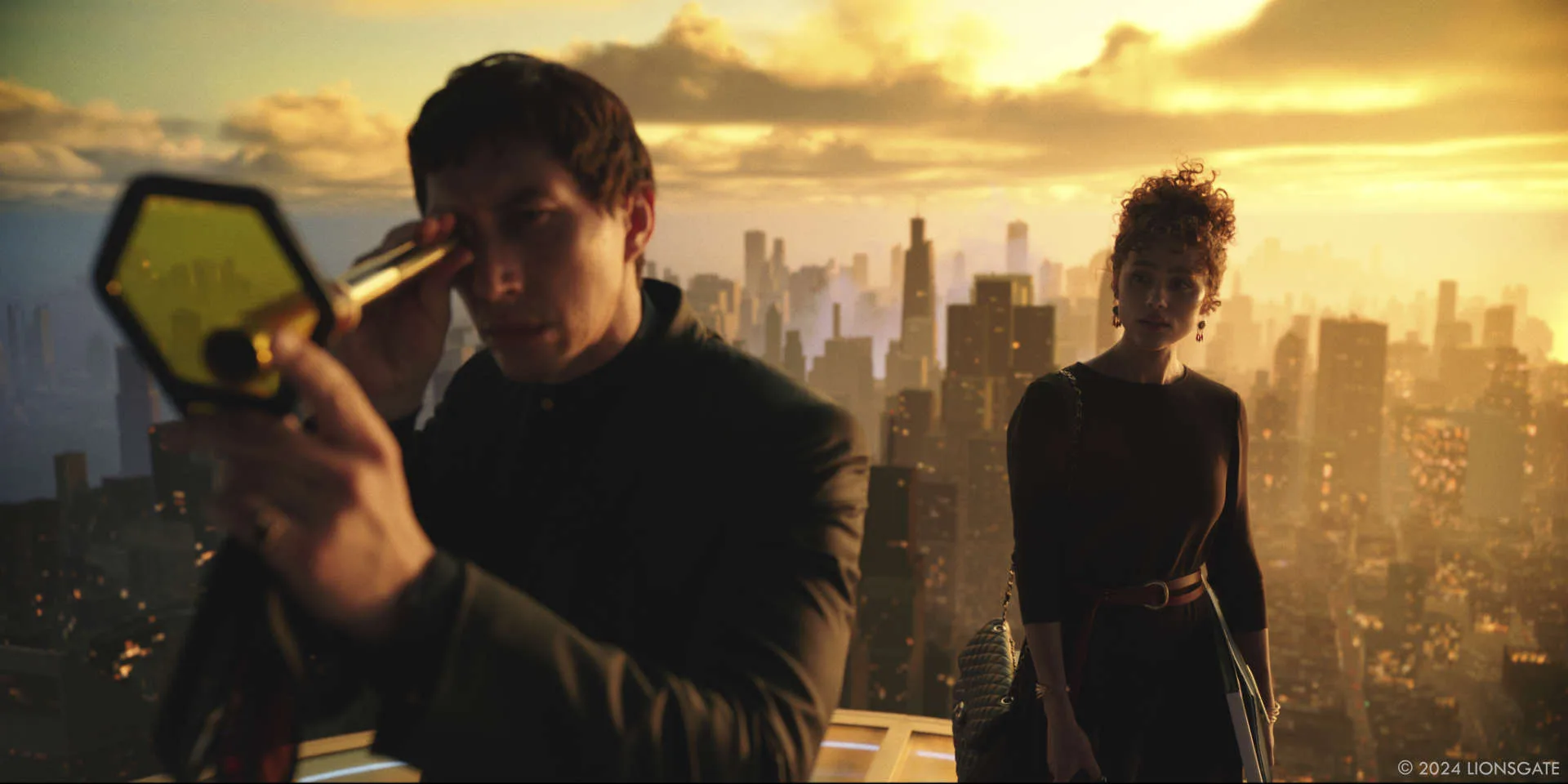
How did you approach recreating the iconic environments of New York in Megalopolis while integrating futuristic elements?
I believe New Rome was initially designed by Dean Sherriff. Once approved by Francis, Alex Coppedge and the Virtual Production team created digital environments as backdrops for several scenes shot in the LED volume at Trilith. The buildings were primitives with simple shaders which was in keeping with the matte painting poetic realism Francis was after. In post, Ollie and the team at Rise replaced or enhanced the environments with depth haze, clouds, birds, camera removal, lights turning on and off, etc.
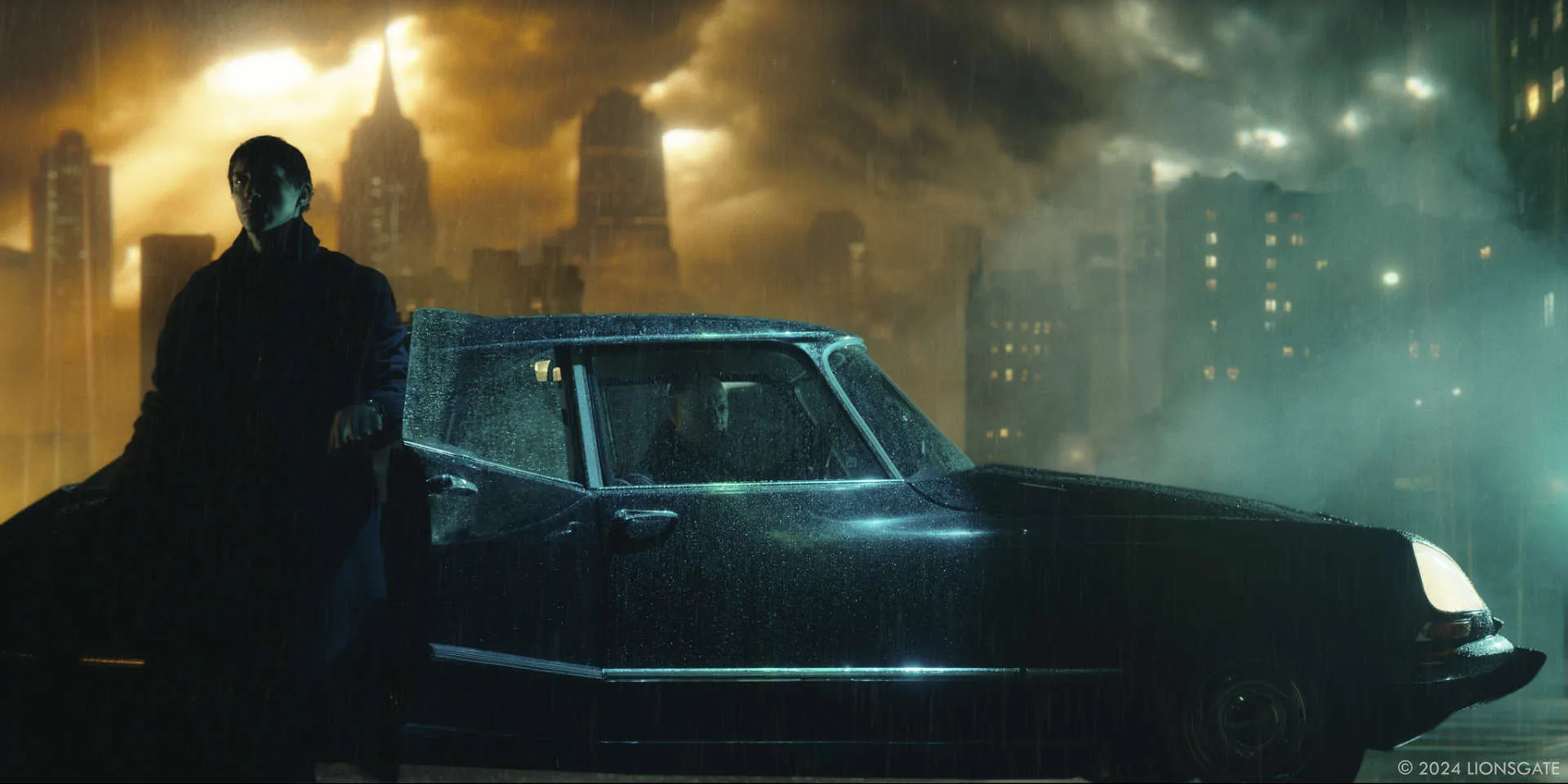
How did your visual effects team interpret and realize Coppola’s vision of a futuristic New York while respecting his unique cinematic style?
Francis opens the film with footage that he and Ron Fricke shot in New York from over 20 years ago. The first visual effects in the show are on the heels of this when Cesar is on top of the Chrysler Building. I shot plates with a small team from the 63rd floor of the Chrysler building to support this moment. This was an area where we needed to keep the heightened emotional stakes and dramatic intensity while letting the audience know they were in good hands visually. It was the closest we were ever going to get to a photo real environment knowing we had to respect the tone of the film and lean heavily into the theatrical handmade world Francis designed.
Were there any specific environments in the film that required particularly innovative or complex work?
The Megalopolis environment itself, revealed at the end of the film in all its glory, was a particular challenge. There was concept art from Dean Sherriff and some 3D art developed by Till Nowak, but the art only captured pieces of the whole, which was enormous. We did a lot of work in post to flesh out the concept into a full three-dimensional place that could be viewed from any angle. Safari Sosobee ran a small team at Narwhal to help us model and lookdev in Unreal for a few weeks. We selected a 6-square kilometer area of Manhattan near the East River as a starting point because we needed some ground-truth scale to build into. We did a series of real-time reviews in Unreal Engine with Francis to find the rough placement of hero elements from the concept. From there, Dean created a top-down drawing that laid out how the walking paths curled through the grounds and intersected with the major structures. Megalon, the material at the heart of the story, is meant to be this benevolent thing that grows in ways that nurture the humanity around it. So, we avoided proceduralism and hand-placed the majority of the elements in Megalopolis. Once we had a rough layout of the grounds, we began to place cameras and render Previs in post and we sent a light version of the city in our world-space and world-scale to Rob Legato. Since he has DP wheels connected to his Unreal setup in his home office, he was able to give us camera moves that had a much-needed human touch. He is a fantastic operator. Rob sent several shots to help us tell the story of the unveiling of Megalopolis. These made their way into the cut and were refined with feedback from Francis. This iterative process was key because it allowed us to focus energy on polishing the areas we would see up close in camera.
Coppola is known for his innovative ideas. How did his expectations influence the techniques and approaches you adopted for the visual effects?
Francis used his staples, the Silverfish and Previs, but he now has LED volume under his belt. I honestly didn’t know what to expect. Arriving in Peachtree for post and learning that we would all be living and working together was an innovative approach I didn’t see coming. I think he did the same for The Outsiders and Rumble fish. In post we worked at Francis’s All-Movie Hotel in Peachtree City, Georgia. But 90% of us also lived there. It was a Days Inn prior to Francis buying the 20+ room hotel. He redesigned and renovated it while he was shooting and well into post. Some mornings you got to wake up to the sound of drilling and sawing at 7 in the morning in the room next door and another day you’d stroll to the kitchen to make a cappuccino and walk by Sanjay Gupta or Spike Lee. It was absolutely wild. The end results gave us beautiful suites, editorial rooms, an ADR booth, a theater with massive mixing boards, and a beautiful open kitchen. We were a big family working, living, cooking, and creating art together. Francis called it his cruise ship.
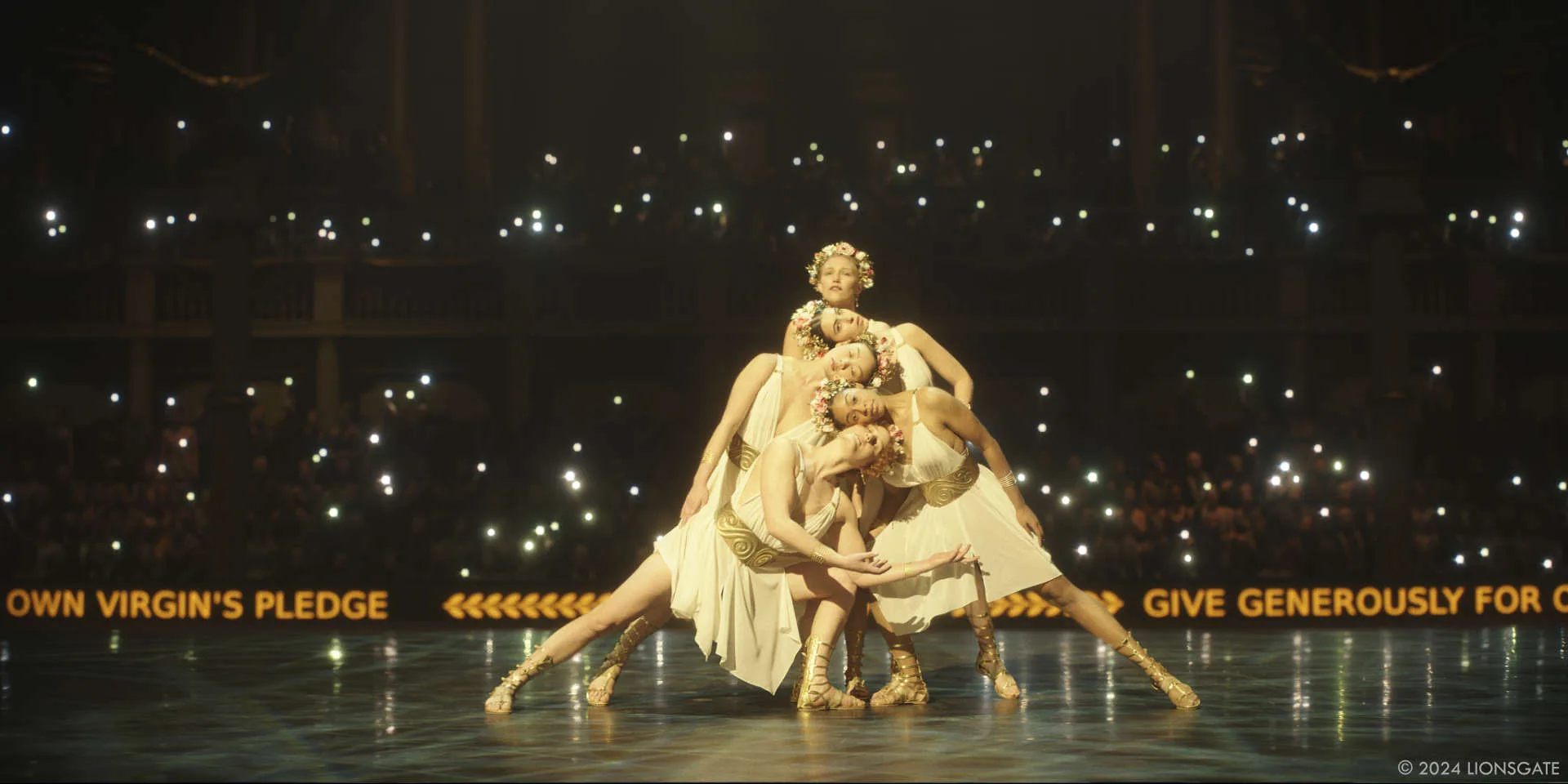
Which aspects of the visual effects in Megalopolis excited you the most and pushed you to push the boundaries of your creativity?
This show pushed me on many levels. If I’m considering a show and it doesn’t scare me, I know it’s not for me. The first challenge that comes to mind was infrastructure, or lack of. I have been spoiled working at Marvel; they have the most robust pipeline supporting its film makers, which sadly is invisible to most. The people Marvel hires to write tools, build their plates lab with their internal pulls system, servers, databases, and the team solving color issues… They are the best in the world. In my humble opinion. hahaha. I quickly realized our newly renovated facility didn’t have any of that and Christopher Finley, Elliot Goff, Konrad Wilbrandt, and I, with the help of Masa Tsuyuki and Jordan Holifield the fixers for The All-Movie Hotel, would need to create it from scratch and share the brunt of these duties. This was strangely exciting and allowed me to flex a different part of my brain.
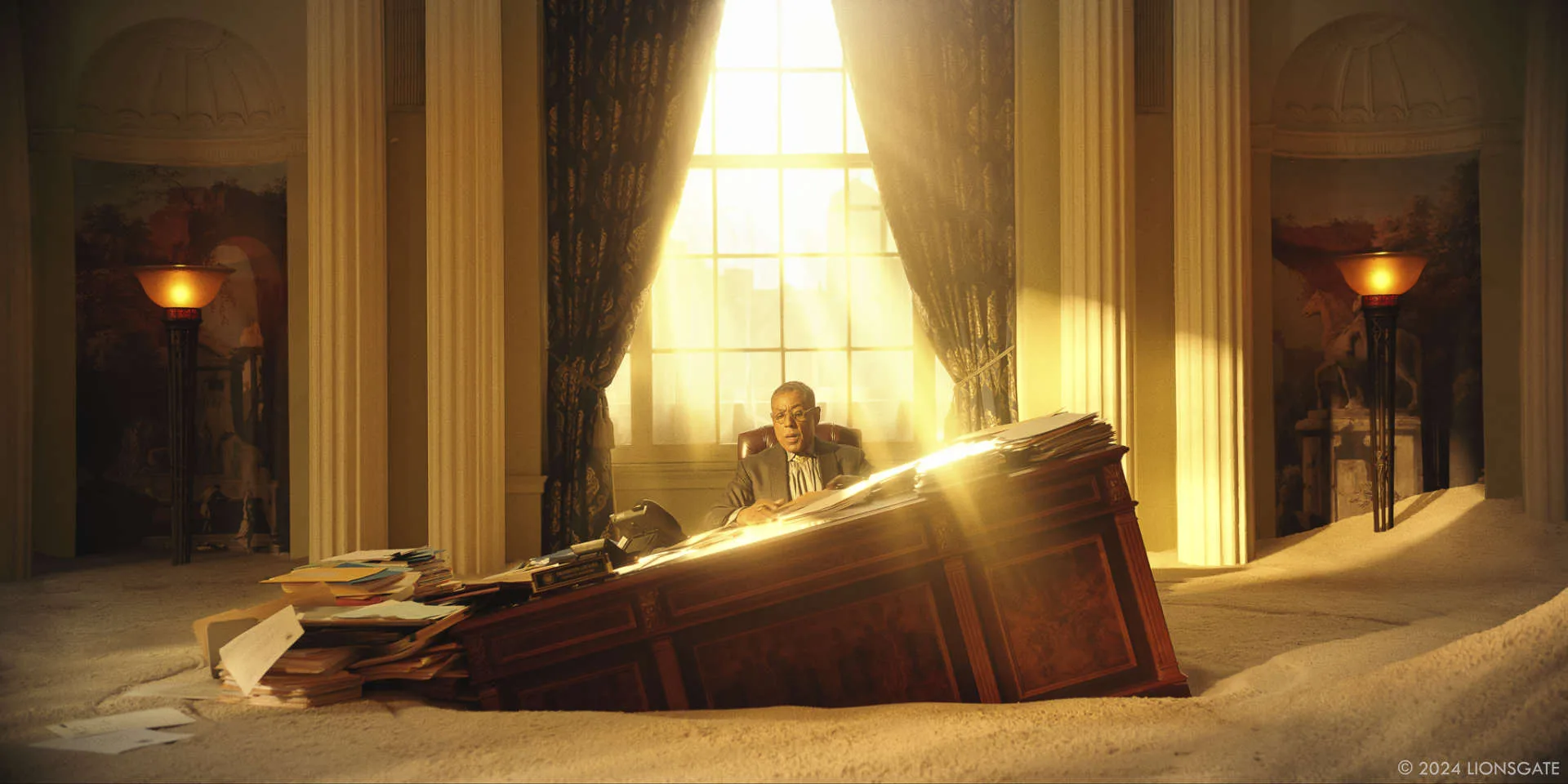
Looking back on the project, what aspects of the visual effects are you most proud of?
I’m proud of it all, even the warts. Our show set out to create images that elicit emotion. We were clear in our intent and knew that this was not going to be photo immaculate. We made the choice to lean into poetic realism and kept that thread through the entire film. People may not understand this film, but I doubt anyone will ever be bored watching it. Francis has been visualizing and putting energy into this film for so many years, I didn’t want to be the guy to fuck this up. There’s a pressure that comes with my seat that lots of people/artists don’t understand. The easier you make it look, the more that people think they can do your job. Good luck! Delivering this film felt incredible. If you look at the resources we had in post, we shouldn’t have been able to pull it off. Francis’s sheer will, our vendors, and all the artists at the All-Movie Hotel stepped up and refused to let it fail.
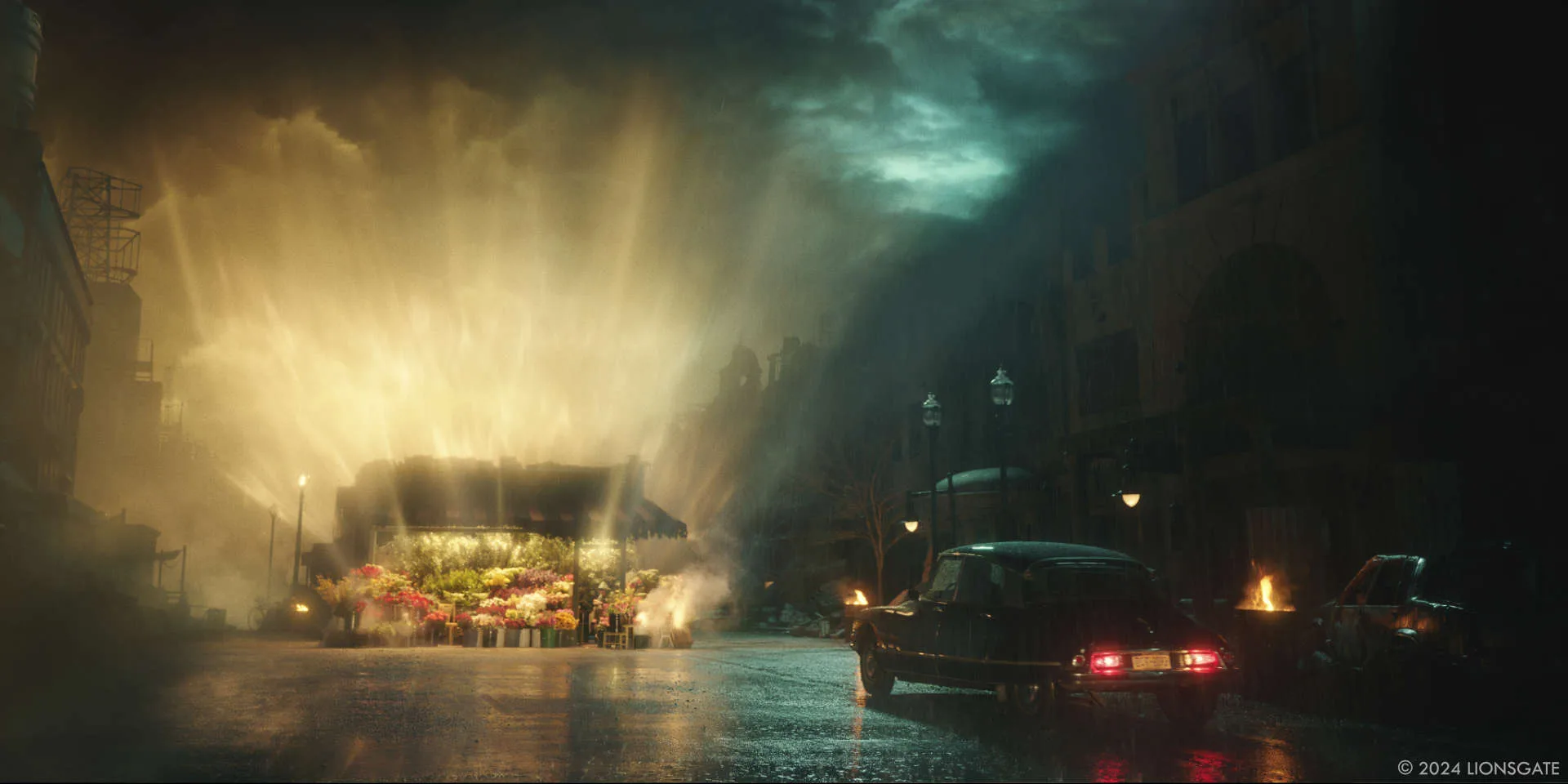
How long have you worked on this show?
I started in June of 2023, we started shot production in August of 2023, and we finished May of 2024.
What’s the VFX shots count?
How many shots did we have in production? Or how many shots ended up in the film? Either way I’m not going to answer, let’s imagine that it was all an in-camera fever dream…
What is your next project?
I’m working with an incredibly talented group of humans on a new Skydance and Apple show called Neuromancer.
A big thanks for your time.
WANT TO KNOW MORE?
RISE: Dedicated page about Megalopolis on RISE website.
UPP: Dedicated page about Megalopolis on UPP website.
© Vincent Frei – The Art of VFX – 2024






